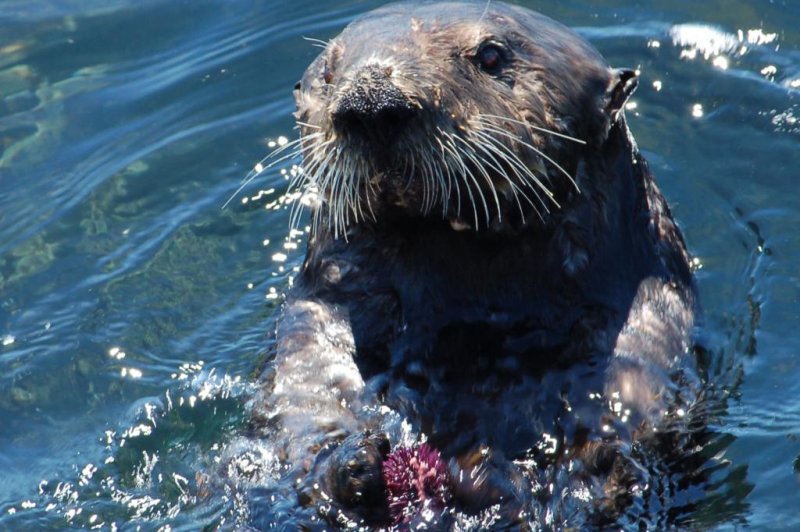
Without sea otters around to eat urchins, Alaska's kelp forests and algal reefs have been left vulnerable to overgrazing. Photo by Matt Knoth/Flickr
Sept. 10 (UPI) -- Keystone predators provide ecological equilibrium, a kind of stability that allows ecosystems withstand sudden changes. Without them, the effects of climate change are more severe.
That's the case off the coast of Alaska's Aleutian Islands, where coral reefs and kelp forests have been left vulnerable to climate change and sea urchin predation in the absence of the Aleutian sea otter, according to a study published Thursday in the journal Science.
Since the 1990s, the Aleutian sea otter has been "functionally extinct," researchers said.
"A 'functional extinction' indicates that, although the sea otter has not gone extinct as a species, its abundance is so low that it no longer has a meaningful ecological impact in the ecosystem," Douglas Rasher, senior research scientist at Bigelow Laboratory for Ocean Sciences, told UPI in an email.
Without sea otters around, local sea urchin populations have exploded. Having thinned the region's once-dense kelp forests, these voracious herbivores have begun gnawing their way through the coralline algae that forms the reef on which kelp grows.
Uranium-thorium dating suggests that some of the reefs, formed by the red alga Clathromorphum nereostratum, are more than 800 years old.
To better understand the resiliency of these unique reefs, researchers examined the layers of calcified skeleton formed by the algae. Each year, the algae builds new layers, cementing a record of their growth.
By examining the thickness of the different algal layers, researchers were able to identify previous sea urchin grazing events.
The layers showed earlier grazing events corresponded with the decline of otters during the height of the fur trade, but that the region's coralline algae was able to withstand previous surges in local sea urchin populations.
Today, the coral-like reefs aren't fairing so well.
To figure out why sea urchins are proving more deadly than they were more than a century ago, researchers paired algae and sea urchins in tanks of seawater back in the lab. Some tanks featured cooler, less acidic conditions, comparable to preindustrial seawater, while other tanks featured temperature and acidity levels comparable to modern ocean conditions.
The experiments proved warmer, more acidic ocean conditions, caused by anthropogenic climate change, have made Clathromorphum nereostratum algae more vulnerable to lethal sea urchin grazing.
"Although sea urchins likely abounded in the Aleutian Islands during and after the fur trade, our experiments indicate that the alga's skeleton was stronger, and rates of sea urchin grazing were much lower, during those past centuries," Rasher said.
The findings serve as a reminder that climate change doesn't alter ecosystems in isolation.
"Our study shows that species interactions and climate change interact in complex ways, highlighting that we must study the processes of predator loss and climate change together," Rasher said.
Sea urchins have proliferated in a variety of ecosystems beyond Alaska's reefs. From the coast of Kenya to the Caribbean islands to the Gulf of Maine, the loss of large fish and other marine predators have led to the explosion of local sea urchin populations, decimating kelp forests and algal reefs.
Reefs and kelp forests often serve as an anchor for diverse marine ecosystems, providing both food and shelter to variety of species. When they become overgrazed, biodiversity declines.
"New consumers are also showing up in many marine ecosystems," Rasher said. "Tropicalization of kelp forests of western Australia has caused the arrival of new herbivorous fishes, who are now preventing the recovery of kelp forests after marine heat waves occur. Moreover, new carnivores are shifting poleward in the Gulf of Maine where red hake and black sea bass have arrived for the first time in recorded history."
upi.com/7037153
No comments:
Post a Comment